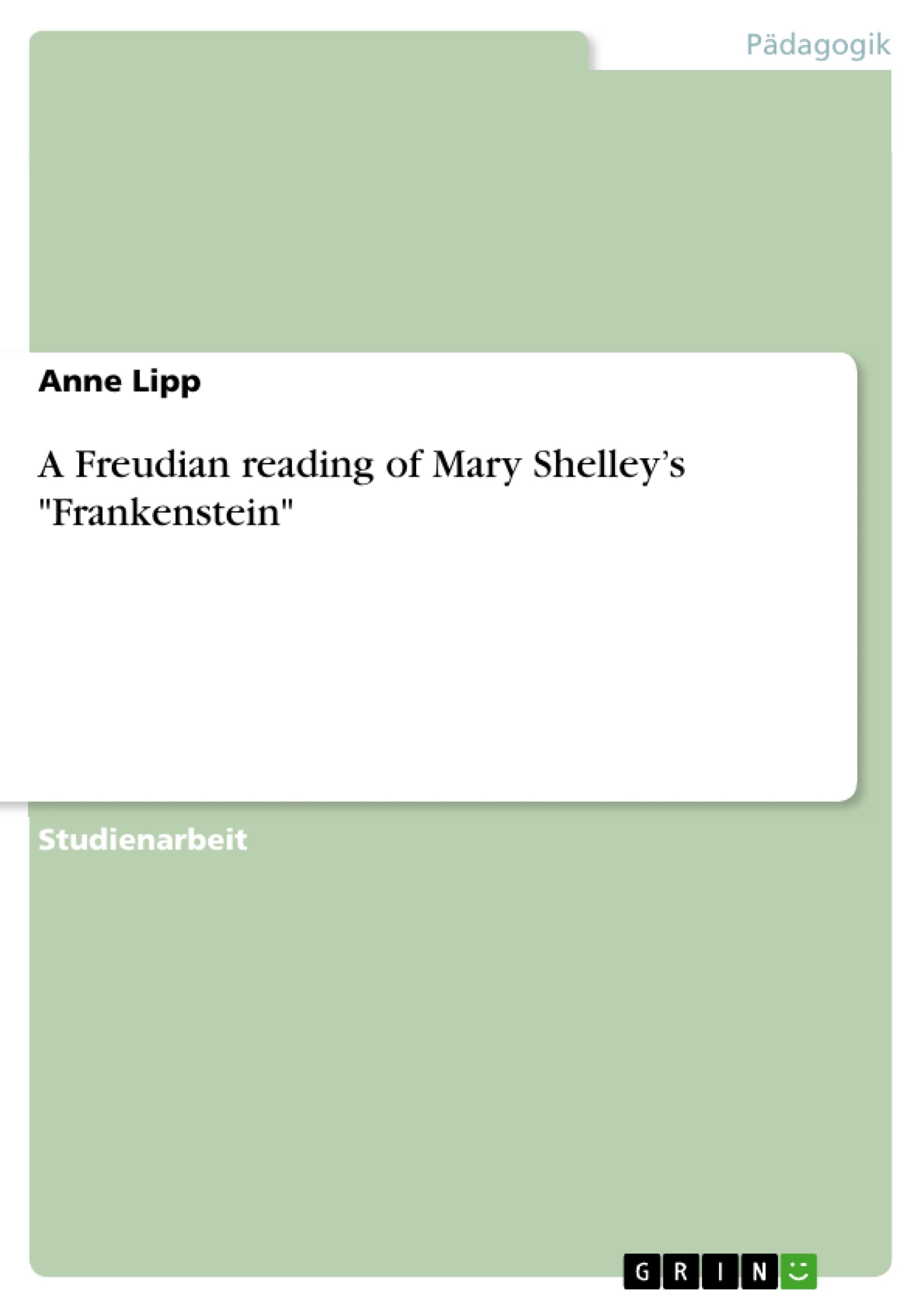The paper will examine Mary Shelley’s “Frankenstein; or the modern Prometheus” under the perspective of the Freudian psychoanalysis. Firstly, Sigmund Freud’s psychic apparatus, the defense mechanisms, the drive theory and the topographical model will be explained. Secondly, the text will be analyzed in detail by taking the former mentioned parts into consideration. The aim is to give an outline of one idea how the novel can be interpreted by analyzing the meaning of the text.
According to Sigmund Freud the personality of each individual consists of three parts called the Id, Super-ego and Ego. The term Id stands for drives, needs and emotions, which are supposed to be fulfilled by the pleasure principle. This means that it longs for the immediate satisfaction of its desires.
The Super-ego is understood as the counterpart of the Id and contrasts ideas of social norms, values, obedience, morals and the conscience, which are mainly acquired trough the education by the parents. Freud claims further that only after the development of the Super-ego humans are able to act responsibly and to control their initial drives. “The Super-ego is frequently characterized as an internalized code, or more popularly, as a kind of conscience, punishing transgressions with feeling of guilt” (Reber, “Dictionary of Psychology” 746).
The Ego is presented as a linking part between the Id and the Super-ego. Therefore, it is supposed to be the instance, which corresponds to the reality principle, also referred to as the self-consciousness.
Inhaltsverzeichnis
- Introduction
- Aim of this Paper
- Freudian Psychoanalysis
- The Psychic Apparatus
- Defense Mechanisms
- Drive Theory
- Topographical Model: Consciousness vs. Unconsciousness
- A Freudian Analysis of the Text
- Victor's Childhood
- Death of the Mother
- Ingolstadt
- Creation
- Birth
- Victor's Collapse
- Development of the Creature
- Victor's Temporary Recovery.
- The Creature's Development to a Monster
- The Letter
- Execution of Justine
- Revenge
- Meeting in the Alpine Valleys
- Creating a Female
- Wedding-Night
- Final Hunting
- Conclusion
Zielsetzung und Themenschwerpunkte
Diese Arbeit analysiert Mary Shelleys "Frankenstein; oder der moderne Prometheus" aus der Perspektive der Freudschen Psychoanalyse. Sie erläutert zunächst Sigmund Freuds psychisches Apparat, die Abwehrmechanismen, die Triebtheorie und das topografische Modell. Anschließend wird der Text detailliert unter Berücksichtigung dieser Konzepte analysiert. Ziel ist es, einen Überblick über eine Interpretation des Romans durch die Analyse der Textbedeutung zu geben.
- Die Bedeutung des psychischen Apparats in der Interpretation von "Frankenstein"
- Die Rolle von Abwehrmechanismen im Verhalten der Charaktere
- Die Auswirkung der Triebtheorie auf Victors Entscheidungen
- Die Bedeutung des Unbewussten in der Gestaltung der Handlung
- Die Rolle des Oidipuskomplexes in Victors Entwicklung
Zusammenfassung der Kapitel
Introduction
Die Einleitung stellt den Fokus der Arbeit auf die Analyse von Mary Shelleys "Frankenstein" aus freudscher Sicht dar. Sie erläutert die zentralen Konzepte der Freudschen Psychoanalyse, die im weiteren Verlauf der Arbeit verwendet werden.
Victor's Childhood
Dieses Kapitel analysiert Victors Kindheit im Hinblick auf die Entwicklung seines psychischen Apparats und die Bedeutung von Libido und Objektkathxeis. Es untersucht den Einfluss der engen Beziehung zu seinen Eltern und der Adoption von Elizabeth Lavenza auf seine Entwicklung.
Death of the Mother
Das Kapitel untersucht die Auswirkungen des Todes von Victors Mutter auf seine psychische Verfassung und seine spätere Entwicklung. Es thematisiert Victors Trauer und den Verlust des emotionalen Gleichgewichts.
Ingolstadt
Dieses Kapitel fokussiert auf Victors Studium in Ingolstadt und seinen Wissensdurst. Es untersucht die Rolle des Wissens und der wissenschaftlichen Forschung in Victors Entwicklung und den Einfluss, den sie auf seine spätere Kreation hat.
Creation
Dieses Kapitel beschreibt den Prozess der Schöpfung des Monsters und die damit verbundenen emotionalen und psychischen Belastungen für Victor. Es untersucht Victors Motive und seine ambivalenten Gefühle gegenüber seiner Schöpfung.
Schlüsselwörter
Die Arbeit konzentriert sich auf die Themen Freudianische Psychoanalyse, psychisches Apparat, Abwehrmechanismen, Triebtheorie, Oidipuskomplex, Libido, Objektkathexis, Unbewusstes, "Frankenstein", Mary Shelley.
- Quote paper
- Anne Lipp (Author), 2009, A Freudian reading of Mary Shelley’s "Frankenstein", Munich, GRIN Verlag, https://www.grin.com/document/345103



